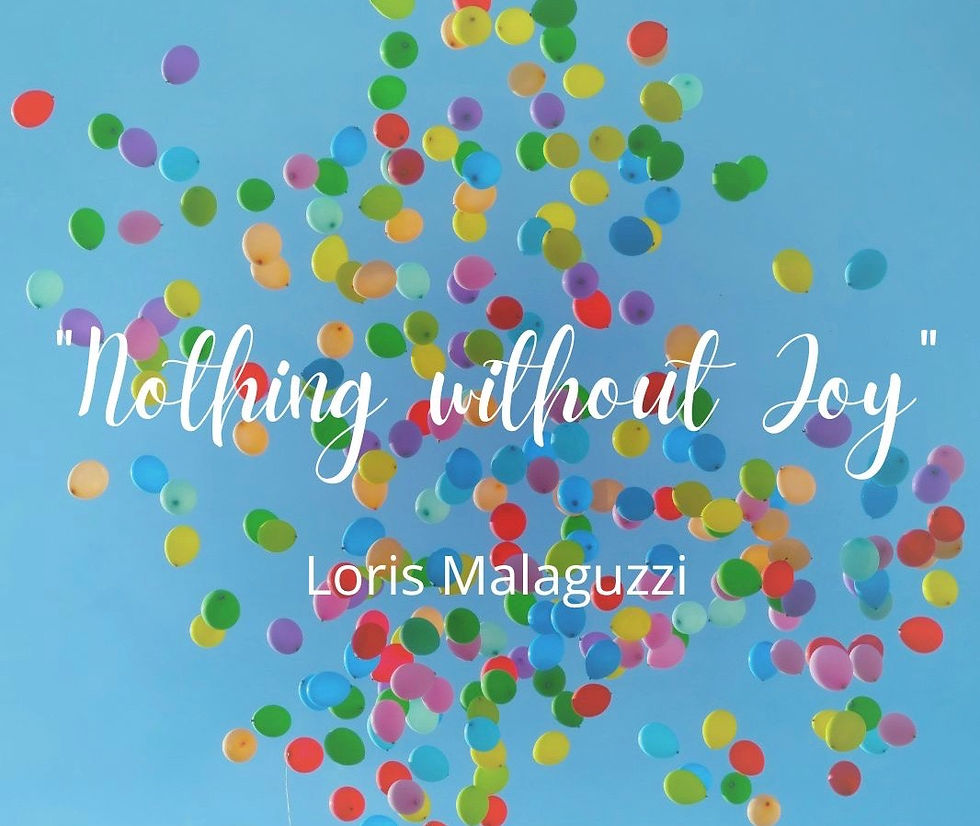Everyone Can Speak the "Language" of Design
- marywbell53
- Nov 1, 2022
- 3 min read
Updated: Nov 7, 2022
"When I first heard educators from Reggio Emilia speak about design many years ago, I could not imagine that the children in my classes would have an interest in what I perceived as simply moving objects about on a surface. I clearly had much to learn about the design process and why it engages children’s (and adult's) hearts and minds!
Design is clear thinking made visible."
Saul Bass

"This is a volcano. The black stones are the smoke."
Child, age 4
Design has since become an integral part of my work with children and teachers. I first explored the process as a classroom teacher, and then worked with it in a more focused way as a Studio art teacher.
The impermanence of design means that there are no “mistakes”, but simply an idea that one chooses to revise.

The ability to translate ideas into images without mature fine motor skills and sophisticated techniques makes design accessible for both young children and for adults who do not think of themselves as artists.
Author's design
This post describes one of countless ways to explore design – individual designs with natural materials.
While I have used many materials for design, I am particularly drawn to natural ones.

Unlike human-made materials, natural materials are unique and complex.
Their textures and colors provide a rich sensory experience, and foster children’s connection with the natural world.

Artist Andy Goldsworthy is famous for his beautiful and ephemeral designs, created with materials he encounters in nature.
Because natural materials are regenerative and can often be acquired without cost, they have both environmental and economic benefits.

Why offer design as a language for self-expression?
It encourages intentionality…

Children can create and re-imagine their ideas without the limitations of a permanent product.
Unlike collage, in which the focus for young children is often quickly filling a surface with glue and materials; design is a more deliberate process.

Because design is impermanent, the question is not simply...
“Do I want to add more?”
but rather...
“Do I want to add, subtract,
rearrange, or begin again?”
Abstract Design - Child, age 4
It invites complexity…
Children can combine and layer shapes, colors, and textures as their ideas evolve.

This intricate design reflects children’s predisposition to recreate the symmetry they experience in their bodies.
Abstract Design - Child, Age 4


"It's a person."
Child, age 3
A design that began as a tick-tack-toe shape evolved into an abstract representation of a person. Materials can guide our ideas - if we to listen to them.
It makes thinking visible…
Children can design representations of images and concepts
in ways they cannot express with other media...

"Dog" - Child, age 3 "

This design reflects the child’s knowledge of a butterfly’s anatomy -
a body, four wings, and antennae with rounded clubs at the end.
"Butterfly" - Child, age 4
It nurtures creativity…
Design invites children to think beyond “what is” to imagine what “could be”.

"A happy guy pretending to be a tree"
Child, age 4
Considerations When Creating Design Provocations
What is your intention for the design experience?
Will designs be created individually or as a group?
Will it take place indoors or outside?
Does it have a specific purpose, such as creating self-portraits, or is it an open exploration of the process?
Do the materials include a variety of colors, shapes, textures, and sizes?

Consider these natural materials:
pinecones, seashells, coral, bark, straight
sticks, small stones, larger river rocks,
leaves, cuttings from boxwoods or
evergreens, flower petals, dried flowers,
flower heads from ornamental grasses
Collections (multiples of a material in a similar size and color) create unity within
the variety of the design.
Are there materials that can be layered?

Layering materials can create complexity and symbolism (for example, a pupil in an eye or apples on a tree)
Are there materials that can create lines and shapes?


Sticks cut into equal-size pieces can replicate straight lines and geometric shapes.
Small stones, shells, or pinecones can create curved lines and shapes.
Are the materials presented in an organized, inviting way?
Offering each material in a clear container encourages intentionality and highlights its beauty.
Is the design surface appropriate for the materials?
Choose a surface that allows the colors of the materials to “pop” and is large enough to
accommodate a complex design.
Possibilities include: paper, felt, mirrors, tree cookies, baking trays, giant leaves
Suggestions for Acquiring and Preserving Natural Materials
Many natural materials can be gathered for free. Ask others to help!
Leaves and evergreen cuttings will stay fresh for several weeks if kept refrigerated in airtight plastic bags when not in use.
Craft stores are sources of inexpensive stones, river rocks, and shells.
“Dollar Stores” are sources of inexpensive clear containers.
“Design is an opportunity to continue telling the story,
not to just sum everything up.”
Tate Linden
The story continues in my next post as I explore design as a process
for creating self-portraits and expressing emotions...




Comments